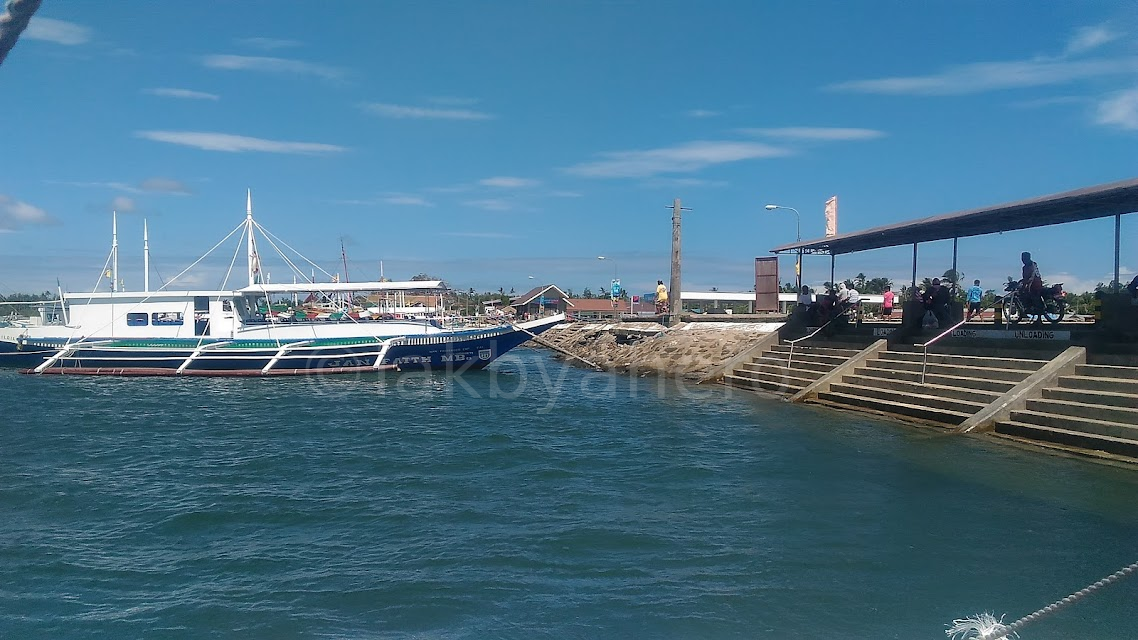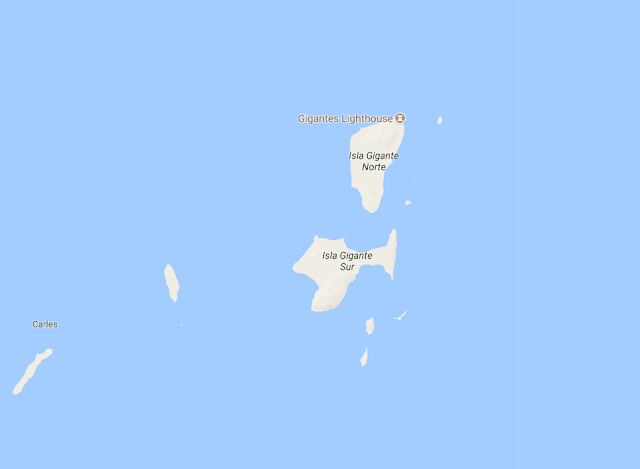Gigantes Islands or Isla de Gigantes is a group of small islands located in the Visayas region of the Philippines. It is an exceptionally popular island-hopping destination in the town of Carles in Iloilo due to the fact that these remote islands flaunt pristine white sand beaches and a spectacular seascape complemented by cliffside rock formations. Add to that the fresh seafoods and affordable rate it offers and the islands definitely have more than enough reasons to lure tourists from all over the world. The islands are known for their pristine beaches, crystal-clear waters, and unique rock formations that make for a stunning natural landscape.
Where exactly is Gigantes Islands?
The Gigantes Islands are a part of Carles municipality in Iloilo and are the northernmost part of the province. This island group consists of 10 islands, Gigantes Norte and Gigantes Sur being the two largest among them.How to get there:
Gigantes can be reached via 2 gateways: Iloilo Airport and Roxas Airport in Capiz. It takes at least 5 hours to travel from Iloilo City to the islands and approximately 3.5 coming from Roxas City, the reason why I chose to fly to the latter. From Roxas Airport, ride a trike bound for Roxas City Integrated Terminal in Pueblo de Panay then hop on a van bound for Balasan, Iloilo. |
| Roxas Airport |
 |
| Public ferry bound for Gigantes Norte |
Getting Around:
Gigantes Norte can be explored by renting a motorcycle from resorts or the locals and they cost only P300 a day inclusive of fuel (a good deal in contrast to 600 pesos in Bantayan, Cebu which is exclusive of fuel). It will take approximately half a day before one can tour the entire island.What to do:
Take an island hopping tour
Island hopping is one of the most popular activities in Gigantes Islands, after all, it is a small archipelago. There are several tour operators that offer island-hopping tours for visitors. These tours typically include visits to some of the most popular islands such as Antonia, Bulubadiang, Gigantillo, Gigantuna, Tanguingui, and Turnina. These attractions offer opportunities for swimming, snorkeling, and relaxing on the beach.
One of the most common routes for island-hopping tours in Gigantes Islands includes stops at Cabugao Gamay Island, Bantigue Sandbar, and Tangke Saltwater Lagoon. Some tours may also include stops at other islands and attractions, depending on the tour operator and the specific itinerary.
 |
| Tangke saltwater lagoon |
The tours usually start early in the morning and last for several hours, with lunch provided on one of the islands. The boats used for the tours are typically small outrigger boats, which can accommodate up to 10-15 passengers.
During the tour, visitors can enjoy the stunning scenery of the islands, swim in the crystal-clear waters, and snorkel to explore the rich marine life. The tour guides also provide information about the islands, their history, and their unique features.
Visitors should bring their own snorkeling gear, towels, sunscreen, and other essentials for a day out on the water. It is also important to dress appropriately, with light and comfortable clothing, as well as a hat and sunglasses to protect from the sun.
Overall, island hopping is a great way to explore the beauty and diversity of Gigantes Islands. Whether you are looking for adventure or relaxation, an island-hopping tour is an unforgettable experience that should not be missed.
Relax at its white sand beaches
Gigantes Islands is known for its stunning white sand beaches, which are among the most beautiful in the Philippines. Here are some of the best white sand beaches to visit in Gigantes:
- Cabugao Gamay Island: Cabugao Gamay Island is a must-visit destination in Gigantes, with its picturesque white sand beach and crystal-clear waters. The island is surrounded by towering cliffs, and visitors can climb up to a viewpoint for panoramic views of the surrounding islands.
- Antonia Beach: Antonia Beach is another beautiful white sand beach on Gigantes Norte Island. The beach is secluded and peaceful, with calm waters that are perfect for swimming and snorkeling.
- Bantigue Sandbar: The Bantigue Sandbar is a long stretch of white sand that emerges from the sea during low tide. Visitors can walk along the sandbar and take in the breathtaking views of the surrounding islands and clear waters.
- Alobijod Cove: Alobijod Cove is a secluded beach on Gigantes Sur Island, known for its soft white sand and clear waters. The beach is surrounded by lush greenery and towering cliffs, creating a serene and tranquil atmosphere.
- Tangke Saltwater Lagoon: While not technically a beach, the Tangke Saltwater Lagoon is a stunning natural pool formed by a hollowed-out limestone formation that is filled with seawater. The lagoon is surrounded by towering cliffs, and visitors can swim in the crystal-clear waters.
These are just a few of the many beautiful white sand beaches in Gigantes Islands. Whether you are looking for a peaceful retreat or an adventurous day out, there is a beach in Gigantes that will suit your preferences.
Explore its mystical caves
Gigantes Islands is also known for its many mystical caves, which are popular attractions for visitors seeking adventure and exploration. Here are some of the most intriguing caves to explore in Gigantes:
- Bakwitan Cave: Bakwitan Cave is a large cave on Gigantes Norte Island that served as a refuge for the locals during the Spanish colonization period. The cave is filled with interesting rock formations and offers a glimpse into the history of the region.
- Pawikan Cave: Pawikan Cave is a small cave on Gigantes Norte Island that is home to a colony of sea turtles. Visitors can take a guided tour of the cave and witness these majestic creatures in their natural habitat.
- Bulubadiangan Cave: Bulubadiangan Cave is a cave on Gigantes Sur Island that features stunning rock formations and underground streams. Visitors can explore the cave with a guide and swim in the crystal-clear waters.
- Tangke Cave: Tangke Cave is a small cave on Gigantes Norte Island that leads to a hidden cove. The cave is accessible only during low tide, and visitors can swim in the crystal-clear waters of the cove.
- Imoy Cave: Imoy Cave is a cave on Gigantes Norte Island that features a small underground pool. Visitors can swim in the pool and admire the unique rock formations in the cave.
Exploring these mystical caves is an unforgettable experience that offers a glimpse into the natural wonders and history of Gigantes Islands. However, visitors should always exercise caution and take necessary safety precautions when exploring caves, such as wearing appropriate footwear and carrying a flashlight.
Visit the old lighthouse
The Gigantes Islands are home to an old lighthouse that stands as a testament to the region's rich maritime history. The Faro de Gigantes, or the Gigantes Island Lighthouse, was built in 1895 during the Spanish colonial period and has served as a guide to sailors navigating the treacherous waters around the islands for over a century.
 |
| The Faro de Gigantes |
The lighthouse is located on a hill on Gigantes Norte Island and offers stunning panoramic views of the surrounding islands and the sea. Visitors can climb up the spiral staircase to the top of the lighthouse and take in the breathtaking views from the observation deck.
While the lighthouse is no longer operational, it remains an important historical landmark and a popular attraction for visitors to Gigantes Islands. The structure has undergone restoration and renovation in recent years, ensuring that it will continue to stand as a testament to the region's rich maritime history for years to come.
Visitors should be aware that the climb up the lighthouse can be steep and challenging, and appropriate footwear and clothing should be worn. However, the stunning views from the top make the effort well worth it, and the Faro de Gigantes remains a must-visit destination for anyone exploring the beautiful islands of Gigantes.
Go "rock scrambling"
For adventure seekers, the rock scrambling activity on the "Boulevard" in Gigantes Sur is a must-try experience. The Boulevard is a stretch of rugged coastline that is known for its unique rock formations and stunning views of the sea.
Rock scrambling involves traversing the rocky terrain of the coastline, climbing over boulders, and maneuvering through narrow crevices to reach hidden coves and lagoons. The challenge of navigating the rough terrain is rewarded with breathtaking views of the sea and the surrounding islands.
The rock formations along the Boulevard are unique, with many formations resembling animals or other objects. One of the most famous formations is the "Gigantes King", a rock formation that resembles the face of a king.
The activity can be challenging, so visitors are advised to wear appropriate footwear and clothing and to take necessary safety precautions. It is recommended to go with a guide who can show visitors the best routes to take and ensure their safety.
Overall, rock scrambling on the Boulevard in Gigantes Sur is a thrilling and unforgettable experience that offers a unique way to explore the rugged coastline and take in the natural beauty of the region.
Feast on fresh seafoods
Gigantes Islands is renowned for its abundance of fresh seafood, and it is a must-visit destination for food lovers. The islands are home to a vibrant fishing community that provides an endless supply of fresh seafood that can be enjoyed in various ways.
The most popular seafood delicacy in Gigantes is the "Gigantes Scallops." These scallops are known for their large size and sweet taste, and they can be prepared in a variety of ways, including grilled, steamed, or cooked in garlic butter sauce.
In addition to scallops, visitors can also indulge in other seafood delights such as prawns, crabs, squid, and various types of fish. These dishes are prepared using traditional recipes passed down through generations, and they offer a unique taste of the local culture.
 |
| Wasay-wasay, a local seafood delicacy |
One of the best places to enjoy fresh seafood in Gigantes is at the local restaurants and eateries, which offer a wide range of seafood dishes at reasonable prices. Many of these restaurants are located along the coastline, providing diners with stunning views of the sea and the surrounding islands.
Overall, a feast on fresh seafood is an essential part of any visit to Gigantes Islands. It is an excellent opportunity to indulge in the local cuisine and experience the unique flavors and traditions of this beautiful region.














No comments :
Post a Comment